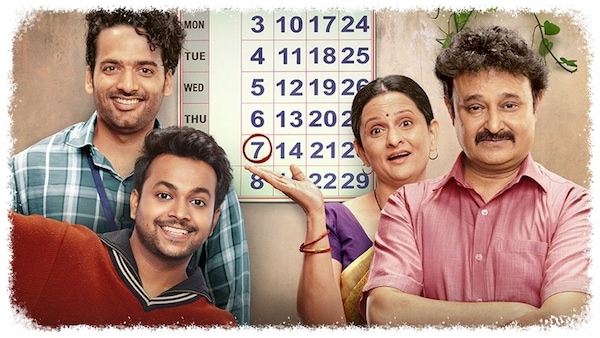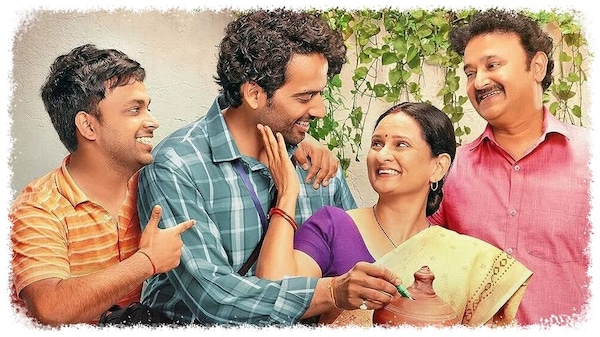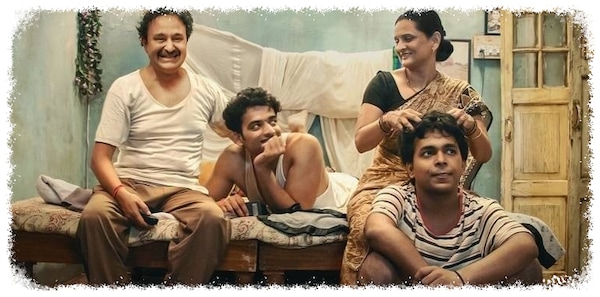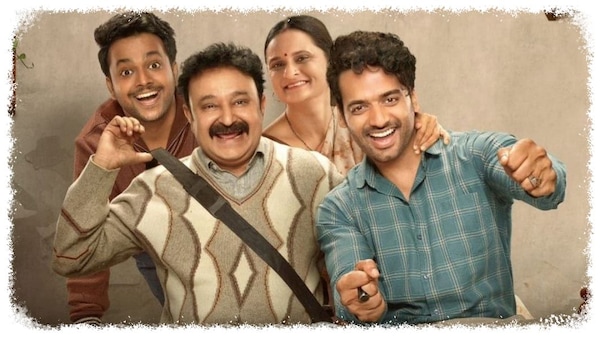Gullak Season 4: Has The TVF Show Plateaued?
This is #CriticalMargin, where Ishita Sengupta gets contemplative over new Hindi films and shows. Today: Gullak Season 4.

Last Updated: 12.47 PM, Jun 07, 2024
THE NEW SEASON of Gullak falls into a trap of its own making. The show revolves around a four-member family navigating everyday problems. Succinctly put, being relatable is both its intent and aspiration. Across the first three seasons, the series has been an immensely watchable exposition of mundanity that did not transpire as boredom. This time, however, the makers remain so tied up in this preoccupation that themes are reduced to aesthetics.
If one of Gullak’s merits hinged on being accessible, this latest season milks it dry. The annoying gullak (piggy bank) voiceover reinforces it and the runtime demonstrates it, till the entirety of the season culminates in a sort of nothingness that evaporates before taking shape. To be fair, Gullak was always about the little nothings of living that one side steps while hurtling forward in the race of life. The treatment in the current season, however, insists that we look at the nothingness and this coercion, more than anything else, hurts the outing.

The focus, yet again, is on the Mishra family. After a health scare (in season 3) Santosh Mishra (Jameel Khan) is back to work, his wife Shanti (Geetanjali Kulkarni) is back in that kitchen and the window grille is still used to frame her but the feeling of entrapment is less pronounced. Their elder son Anand (Vaibhav Raj Gupta) has a job as a medical representative while younger son Aman (Harsh Mayar) is in high school.
Their chemistry is still undeniable but there is a jadedness to their interactions. The four of them continue to sit together to gossip as their neighbour (the excellent Sunita Rajwar) keeps dropping in. But the anecdotes and the reaction shots appear to have been stretched to the limit. The joy of watching them together is replaced by weariness as everything happens and feels like nothing. The stakes, much like the previous seasons, are consistently low till they rise abruptly and then fall again

But the major issue of season 4 is the lazy writing (Vidit Tripathi and Shreyash Pandey are credited for the story; Pandey is also the director) that chooses to tell more than show. If the underlying context to the franchise was that these are middle-class people, it is yanked to the forefront now and given the centrality of a plot. For instance, each episode (there are five) includes one conflict (Santosh Mishra is forced to pay a bribe to a municipality executive; chain is lost; Anand’s overbearing, ill-mannered boss makes an appearance; unending discussions go on regarding the selling of scrap) that is explicitly mentioned as a middle-class woe. In case we don’t understand, the voiceover returns to tell us that we are watching what middle-class people go through. It is a dull tactic that takes up the whole space. More crucially, these conflicts are rendered futile because all of them are also neatly resolved in the runtime of 30 minutes as if these are listless aesthetics and not real issues.

My other problem with Gullak is that for a series that claims to be so entrenched in the middle-class, it is alarmingly and disappointingly apolitical. There are no conversations about rising cost of things, unemployment, or even idle chatter about governments — intrinsic to the strata the series is showcasing. The Mishra family live in a bubble far-removed from reality.
What redeems the show is the terrific cast. Kulkarni is always good even when she is mostly relegated to giving reaction shots this time. Gupta and Mayar are impressive in their turns although Aman’s character feels shortchanged. The one who rises above the flaws of the script is Khan. As a middle-class man whose day gets better at the sight of his favourite dinner, he is consistently moving. His face conjures up a million emotions, reminding us with small gestures that there is more to the Mishras than their problems.
The views expressed in this column are those of the author and do not necessarily reflect the official policy or position of OTTplay. The author is solely responsible for any claims arising out of the content of this column.
